The BMW 3 Series and 5 Series are two of its longest-lived models.
They both feel like definitive representations of what the brand is about – effortlessly blending a great driving experience, a premium cabin, and high-tech features. If you're shopping for a BMW saloon or estate, you might be wondering whether to pick the cheaper 3 Series or stretch to the pricier 5 Series.
We'll compare the two side-by-side to help you make your mind up. Once you've chosen the right model for you, take a look at used BMW 3 Series and used BMW 5 Series cars at Motorpoint.
BMW 3 Series vs BMW 5 Series compared
| BMW 3 Series | BMW 5 Series |
Pros:
| Pros:
|
Cons:
| Cons:
|
Styling and design
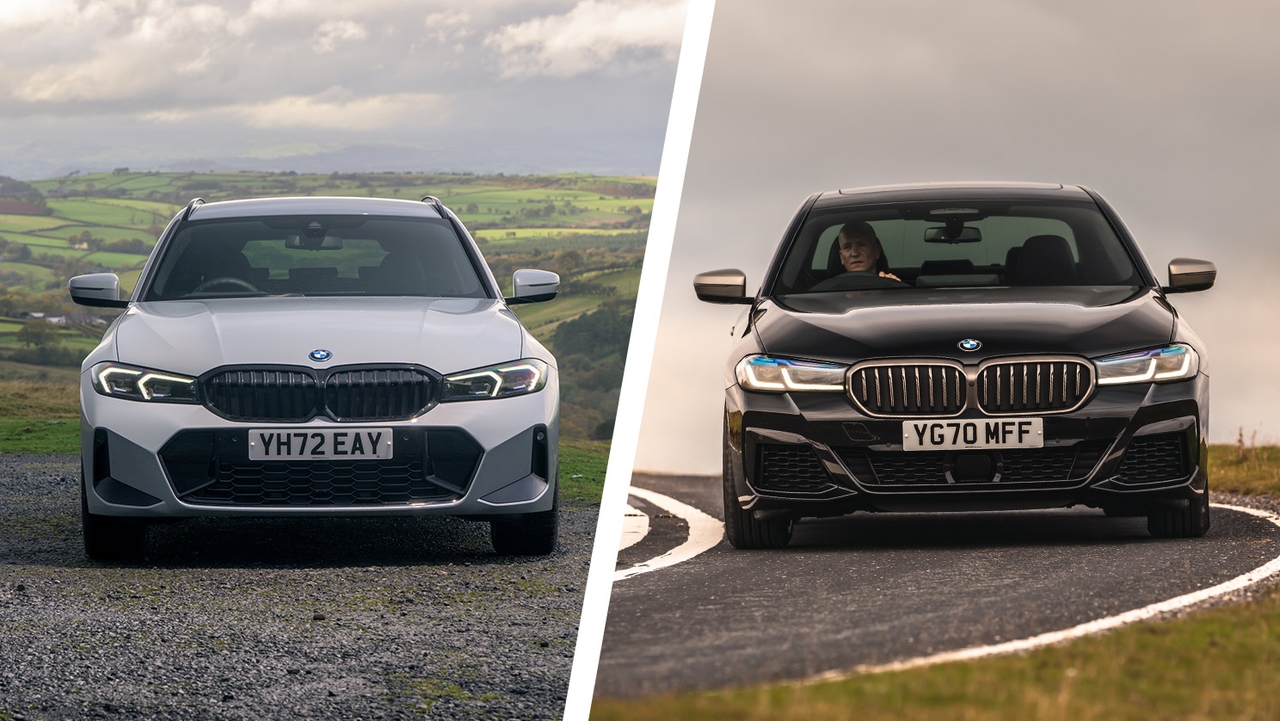
For BMW nerds, we're looking at the G20-generation 3 Series and the G30-generation 5 Series, as these are currently the most abundantly available cars on the used market. BMW has since launched a new 5 Series with a surprisingly controversial design.
Anyway, splitting the 3 Series and 5 Series here is tricky since they share so many common features. Like all BMWs, the brutish 'kidney' grilles are the first thing you notice, flanked by beady, twin-element headlights. There's subtle muscular sculpting down the sides of the body, and most models come in moody black, grey or silver paint colours.
In the metal, the 5 Series' slightly larger footprint – 250mm longer, 41mm wider – gives it a sleeker look to our eyes. However, considering these cars are cut from very similar cloths, it's easier to point to similarities than to differences.
Interior and practicality
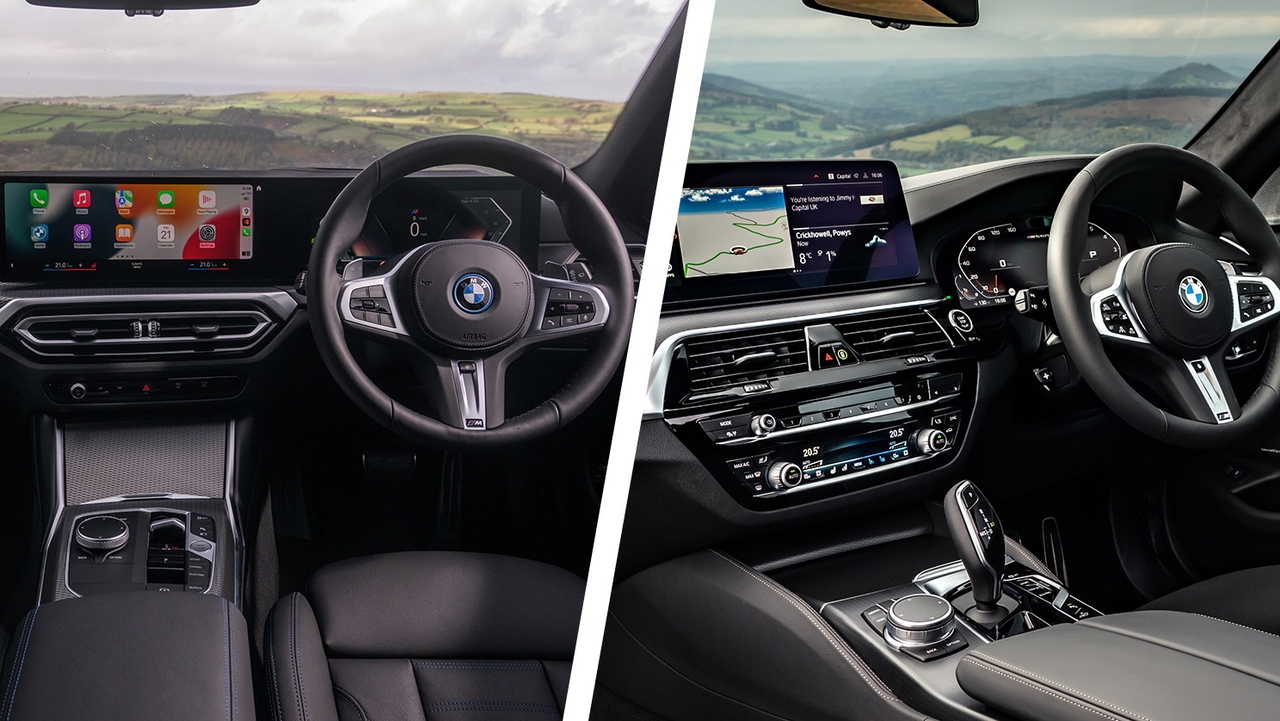
Once again, the similarities when you step inside these two cars are more obvious than the differences. Quality is high – both in the selection of posh materials BMW's trimmed the interior in, and the solid build quality that feels a touch more robust than rivals from Mercedes and Audi.
The 5 Series is the slightly older car – a fact that is most obvious when you look at its infotainment screen setup. There's a single pod-like screen in the middle of the dashboard, with a separate screen in a binnacle for the driver's dials and readouts. The newer 3 Series has a trendier single screen housing that sweeps from behind the steering wheel into the middle of the dashboard. Both retain the rotary controller in the centre console, which makes it easier to adjust infotainment settings from the driver's seat. One benefit of the 5 Series less up-to-date setup, however, is that it still has physical climate controls, which are easier to use than the 3 Series' touchscreen controls.
As mentioned, the 5 Series is bigger than the 3 Series in every dimension, so it's no surprise it beats the smaller car for practicality. The 3 Series doesn't make a poor case for itself, however – you'll fit four tall adults in the cabin and most of their luggage too, especially if you pick the spacious 3 Series Touring estate. Those same passengers will have a more luxurious time in the 5 Series, however, with noticeably more rear-seat space and a handy boost in cargo capacity.
Engines and performance

Considering so much is shared between these two, it's unsurprising that the 3 Series and 5 Series also share most of the same engines under the bonnet. There are straightforward turbo petrol and diesel options for buyers after a solely fuel-powered car, plus punchy plug-in-hybrid options that can slash your running costs if you have access to an EV charger.
For most buyers, they'll be well served by the 320d or 520d diesel option. This 2.0-litre engine serves up 190hp and loads of low-down torque which, paired with the standard eight-speed automatic gearbox, means effortless acceleration all the way to motorway speeds. These options should muster more than 50mpg in normal driving conditions, or even more if you mainly do long-distance journeys.
There are several performance options as you head further up the range. 3 Series buyers should keep an eye out for the M340i petrol or M340d diesel – both of which use brutish 3.0-litre turbocharged engines for tremendous real-world pace. There is an M550i version of the 5 Series with near-enough supercar-levels of performance, but this is exceedingly rare in the UK. Right at the top of the range are the M3 and M5 – both of which are faster than any sane person really needs in a road car, but you can't deny how fun they are on a track.
Driving
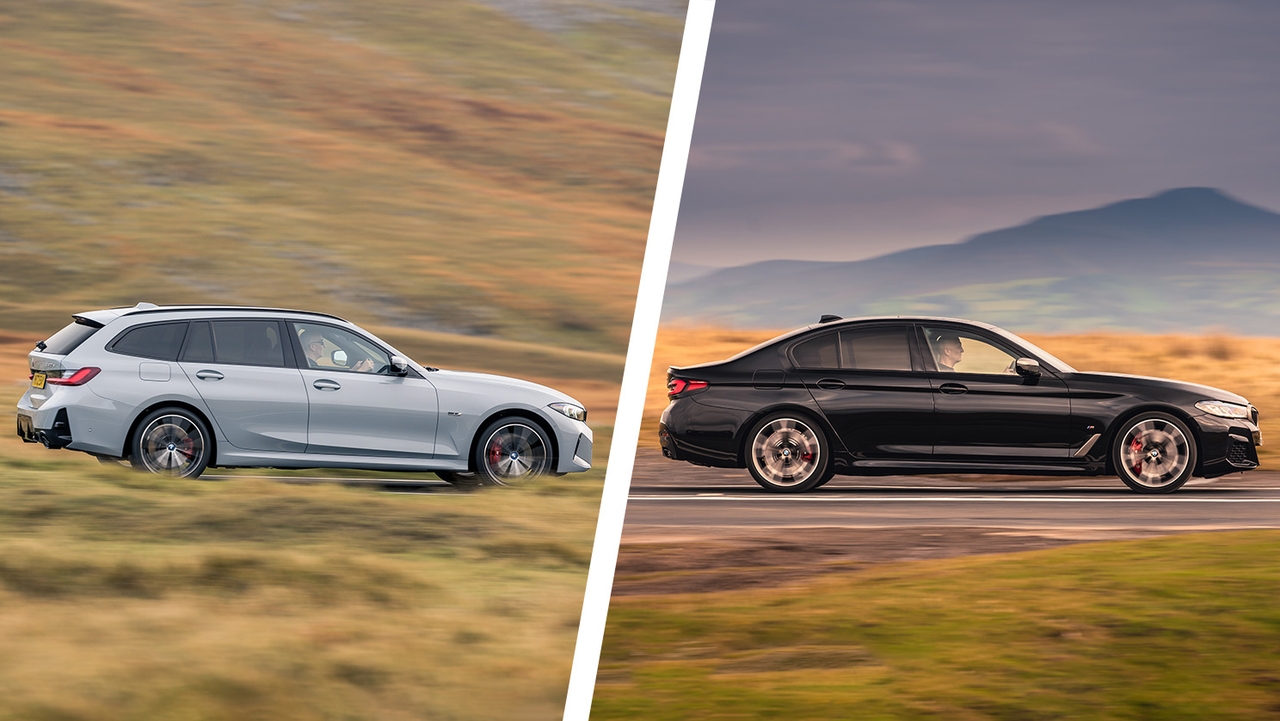
BMW is the only brand big-headed enough to describe its cars as the 'ultimate driving machines', but it does have a point. Compared to direct rivals from the likes of Mercedes, Audi and Tesla, both BMW models have a sense of poise and agility that's rare among big, premium cars like these. Responses to inputs through the steering wheel and pedals feel almost telepathic, giving the sense the car is always on your side.
There really isn't a night-and-day difference between the way the 3 Series and 5 Series drive. Most of the same adjectives that apply to the smaller car also apply to the bigger car. However, drive them back-to-back and you'll notice the larger 5 Series feels just a touch softer, with more sense of mass moving around as you go over bumps in the road. That makes it fractionally the nicer car to tackle long distances in, although passengers in a 3 Series are unlikely to complain about their on-board comfort.
Value and reliability
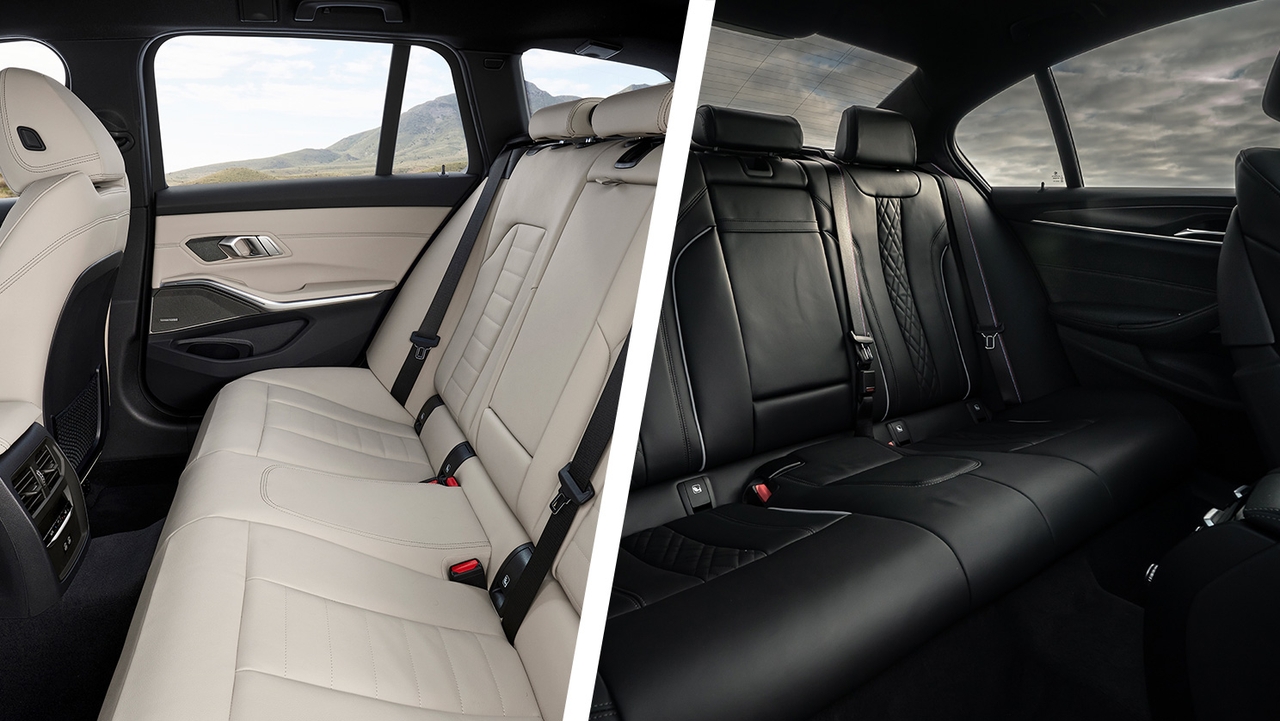
There's around a £10,000 difference in price between brand new 3 Series and 5 Series models. However, if you're shopping on the used market, you might be surprised to find that gap starts to close rapidly once the cars have a few years under their belts.
We've found comparable 3 Series and 5 Series models with similar age, mileage and spec, with differences as little as £3,000. At this level, it's quite reasonable to consider whether you might want to splash a little more cash to get the larger, slightly more premium model. Whichever model you choose, however, you should find PCP finance costs are relatively reasonable thanks to comparatively slow depreciation.
BMW, like other premium German brands, hasn't always scored top marks in reliability surveys. This reflects the high level of features and equipment these cars are normally specified with, which means there are slightly more potential points of failure. Nevertheless, we've not heard any horror stories about either the G20 3 Series or G30 5 Series, so both should give years of trouble-free motoring if you keep up with scheduled maintenance. You can enhance your peace of mind at any time by purchasing an extended warranty with your car.
Which is best?
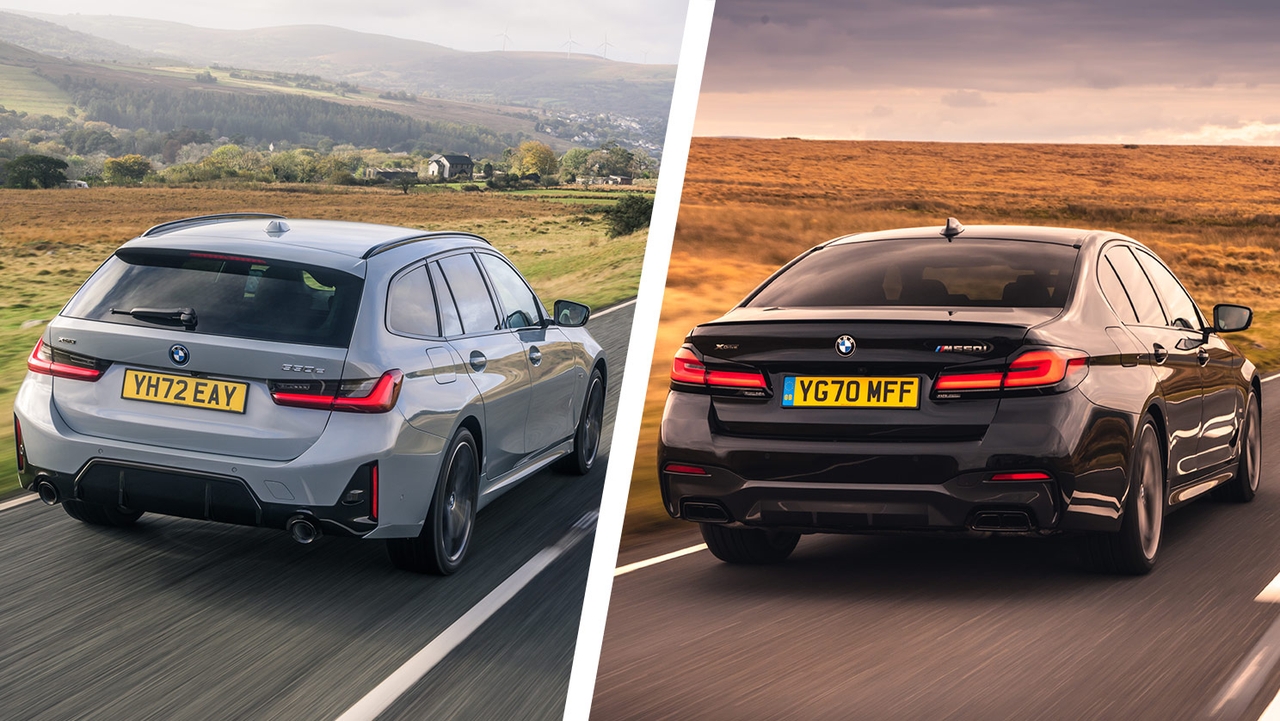
The gap between these two cars is really small. They both offer similar performance, technology and luxury with that distinctive driver focus that BMW is known for. As a used buy, the choice is especially tough because the larger 5 Series may only cost a few thousand pounds more – a difference that becomes pretty small once you look at monthly finance costs.
For our money, we'd probably stretch up to the 5 Series for its extra plushness. Although it's easy to see why you might prefer the more affordable, slightly more agile 3 Series – especially if you regularly have to drive and park in tight urban areas.
Check out the savings available by shopping Motorpoint's huge range of used BMW 3 Series and used BMW 5 Series cars. Don't know your iDrive from your elbow? Read our explainer for all the BMW terminology you'll come across.

































